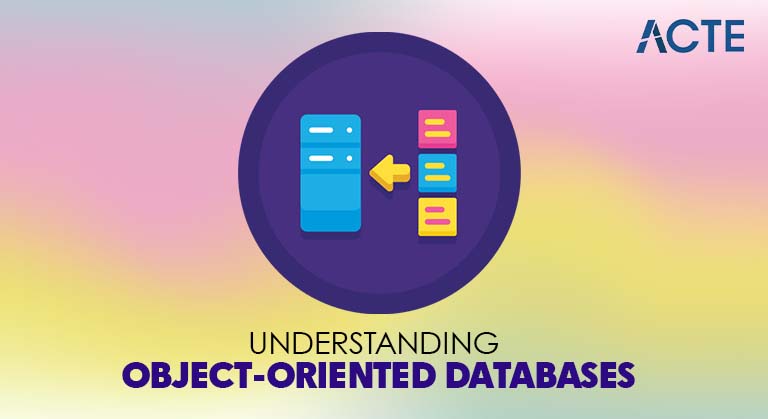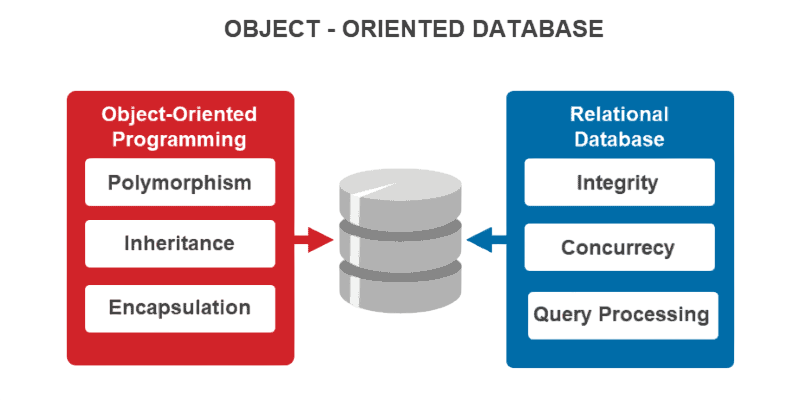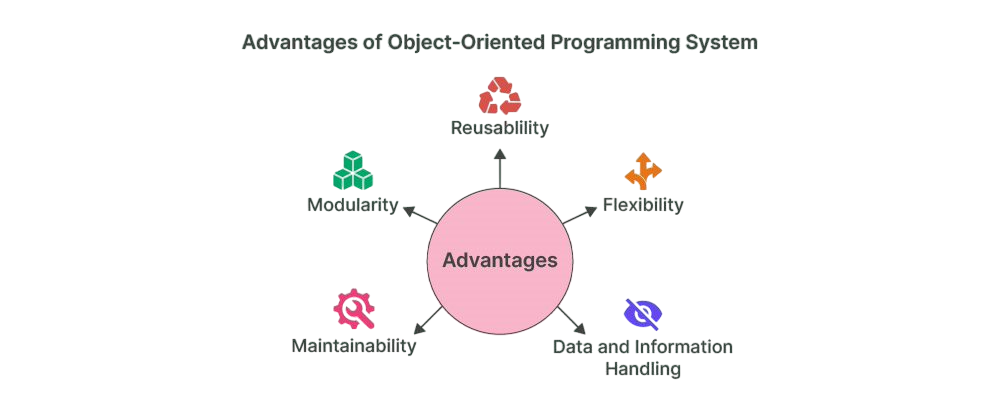
- Introduction to Object-Oriented Database (OODB)
- What is an Object-Oriented Database?
- Key Concepts of Object-Oriented Databases
- Advantages of OODBs
- Disadvantages of Object-Oriented Databases (OODBs)
- Object-Oriented Database Vs. Relational Database
- Conclusion
Introduction to Object-Oriented Database (OODB)
An Object-Oriented Database (OODB) is a database management system that stores data in the form of objects, as used in object-oriented programming (OOP). Unlike traditional relational databases that organize data into tables, rows, and columns, OODBs integrate database capabilities with object programming language principles, enabling the storage of complex data and relationships directly as objects. The concept of object-oriented Database Training emerged to address limitations faced by relational databases when dealing with complex data types such as multimedia, CAD/CAM designs, and scientific data. In an OODB, data and its related behaviors (methods) are encapsulated into a single entity called an object, which reflects how data is modeled in object-oriented programming languages like Java, C++, or Python. Key features of OODBs include support for inheritance, polymorphism, encapsulation, and complex objects. This means objects can inherit properties and behaviors from other objects, support multiple forms of methods, and hide their internal state, making data management more intuitive and closely aligned with application code. Additionally, OODBs handle complex data types and relationships more naturally, avoiding the need for extensive joins and mappings required in relational databases. OODBs provide a seamless bridge between application objects and database objects, reducing the so-called impedance mismatch often encountered when using relational databases with object-oriented programming. This leads to more efficient development and maintenance of applications that require sophisticated data structures. Common use cases for object-oriented databases include computer-aided design (CAD), geographic information systems (GIS), multimedia applications, and software engineering environments where complex data models and behavior-rich data are necessary. Attributes in DBMS Though relational databases dominate the market, OODBs offer valuable advantages in specialized scenarios, especially where data complexity and the need for tight integration with object-oriented programming languages are critical. Examples of popular OODB systems include ObjectDB, db4o, and Versant Object Database. In summary, Object-Oriented Databases provide an effective solution for managing complex data in a way that aligns closely with modern software development practices, offering flexibility, scalability, and improved developer productivity.
Do You Want to Learn More About Database? Get Info From Our Database Online Training Today!
What is an Object-Oriented Database?
An object-orientated database (OODB), Advantages of OODBs is a sort of database control machine that aligns with the ideas of object-orientated programming. In an OODB, statistics is prepared and saved in gadgets, which act as packing containers for the statistics and the strategies that function on that statistics. This layout technique permits for an extra herbal illustration of real-international entities, as gadgets can version complicated relationships and behaviors. · OODBs are mainly appropriate for programs that require dynamic statistics systems and difficult relationships, NoSQL vs SQL as they seamlessly combine object-orientated principles into the database realm, selling green statistics control and retrieval.An Object-Oriented Database (OODB) is a type of database management system that stores data in the form of objects, similar to the way data is represented in object-oriented programming languages. Unlike traditional relational databases that organize data into tables with rows and columns, OODBs combine the principles of object-oriented programming with database technology to allow for the storage of complex data types and relationships directly as objects.

This approach enables the encapsulation of both data and behavior within a single entity, making it easier to model real-world scenarios. Object-oriented databases support key features such as inheritance, polymorphism, and encapsulation, which allow objects to inherit properties, exhibit multiple behaviors, and hide internal details, respectively. This structure reduces the mismatch between the database and application code, streamlining development and improving efficiency. OODBs are particularly useful in applications that require handling complex data, such as multimedia systems, geographic information systems, and computer-aided design. By integrating tightly with object-oriented programming languages, object-oriented databases Serializability in DBMS provide a flexible and natural way to manage data, making them ideal for projects where data complexity and behavior are closely linked.
Advantages of OODBs
Object-orientated databases (OODBs) provide numerous benefits over conventional relational databases. Here are the important thing blessings of OODBs:
- Natural Modeling: OODBs permit for an extra herbal and intuitive modeling of the actual-international entities. The item-orientated technique aligns properly with how we reflect on consideration on and have interaction with gadgets withinside the actual. Objects in an OODB can without delay constitute entities, Top SQL Optimization their attributes, and their relationships, making it less difficult to apprehend and paintings with the facts.
- Complex Data Structures: OODBs excel at managing complicated facts structures. Objects may be interconnected via relationships, allowing the illustration of complicated facts models. This makes OODBs properly-desirable for programs that cope with complicated and evolving facts structures, along with computer-aided design, multimedia structures, and clinical programs.
- Code Reusability: OODBs help inheritance, permitting gadgets to inherit residences and techniques from determine gadgets. This promotes code reuse and decreases redundancy, as not unusual place functionalities may be described in a superclass and inherited via way of means of subclasses. A Code reusability complements an improvement productiveness and simplifies upkeep.
- Flexible Querying: OODBs frequently offer item-orientated question languages primarily based totally on item-orientated constructs for querying facts.These question languages allow expressive and bendy querying, permitting builders to navigate complicated item relationships and carry out complicated searches successfully.
- Persistence: OODBs make sure facts persistence, which means that gadgets and their related facts persist past the lifespan of a program What is Database Testing . This removes the want for separate facts mapping layers and simplifies the garage and retrieval of item facts.
- Performance: OODBs can provide higher overall performance for unique programs in comparison to relational databases. Directly mapping gadgets to the underlying garage can lessen the want for complicated joins and facts transformations, ensuing in quicker facts get right of entry to and retrieval.
- Inheritance: Inheritance is a mechanism in object-orientated programming that permits items to inherit residences and techniques from figure items or instructions. It promotes the code reuse and advent of hierarchical relationships among items. In the context of OODBs, inheritance allows an employer and structuring of items into the category hierarchy. It helps the sharing of not unusual place attributes and behaviors among items, simplifying the modeling and manipulation of information.
- Abstraction: Abstraction is a idea that makes a speciality of representing complicated structures or entities with the aid of using emphasizing their important traits whilst hiding pointless details. It permits us to create summary fashions or instructions that seize a set of items` not unusualplace attributes and behaviors.In object-orientated databases, abstraction allows the definition of high-degree items that summary away implementation complexities, making it less difficult to recognize and paintings with the information.
- Polymorphism: Polymorphism is the capital of items to tackle more than one paperwork or Database Training showcase unique behaviors primarily based totally on their context. It permits items of various instructions to be handled as items of a not unusual place superclass, selling flexibility and extensibility in object-orientated . Polymorphism in OODBs allows items to reply otherwise to the identical message or approach call, relying on their particular elegance or inheritance hierarchy. It simplifies the control of items with various behaviors and promotes code reuse and versatility in modeling complicated relationships among items.
- Encapsulation: Encapsulation refers back to the idea of consolidating each information and the corresponding techniques that control that information right into a cohesive entity, usually known as an object. It affords information safety and statistics hiding, making sure that an object`s inner kingdom is available and adaptable handiest via described interfaces. Encapsulation in OODBs guarantees that information integrity is kept with the using controlling get entry to the object`s information and imposing the usage of distinct techniques for an information manipulation.
- Lack of Standardization: One of the fundamental drawbacks of OODBs is the absence of a extensively usual preferred like SQL in relational databases.Each OODB machine may also have its very own language or API, making it tough to learn, migrate, or combine throughout platforms.
- Limited Adoption and Tool Support: OODBs aren’t as extensively used as relational databases, because of this that fewer improvement tools, network resources, and professional experts ETL Process are available. This can pose demanding situations for upkeep and long-time period help.
- Complex Querying: Querying in OODBs may be extra complicated, specially for customers acquainted with SQL. Object Query Languages (like OQL) are much less mature and now no longer as intuitive or universally usual as SQL.
- Performance Overhead: For simple, dependent facts and high-extent transaction structures, OODBs might not carry out as successfully as relational databases. Their power in managing complicated gadgets may also cause overall performance trade-offs in easier use cases.
- Step 1: Understand LDAP and MongoDB Integration
- Step 2: Set Up an LDAP Server
- Step 3: Design the Database Schema
- Step 4: Implement User Registration and LDAP Integration
- Step 5: LDAP Authentication
- Step 6: Manage Roles and Permissions
- Step 7: Secure Access to MongoDB
- Step 8: Test and Debug
- Step 9: Deploy and Scale

Would You Like to Know More About Database? Sign Up For Our Database Online Training Now!
Key Concepts of Object-Oriented Databases
Disadvantages of Object-Oriented Databases (OODBs)
To Earn Your Database Certification, Gain Insights From Leading Blockchain Experts And Advance Your Career With ACTE’s Database Online Training Today!
Object-Oriented Database Vs. Relational Database
Object-Oriented Databases (OODBs) and Relational Databases (RDBs) differ fundamentally in how they store, manage, and represent data. OODBs store data as objects, which encapsulate both the data and the behaviors (methods) related to that data, closely aligning with object-oriented programming paradigms. This allows OODBs to naturally represent complex data types, hierarchies, and relationships, supporting features like inheritance, polymorphism, and encapsulation. On the other hand, Relational Databases organize data into tables consisting of rows and columns, relying on structured query language (SQL) for data manipulation. RDBs use a rigid schema and emphasize data normalization to reduce redundancy, which works well for straightforward, Sql Server Certification tabular data but can become complex when modeling intricate relationships. One key advantage of OODBs is the reduced “impedance mismatch” between the database and application code, as objects in the database mirror the objects used in programming languages. This leads to more intuitive data handling and can simplify development, especially for applications with complex data models such as CAD, multimedia, or scientific data. Conversely, relational databases benefit from widespread adoption, mature tools, standardized query languages, and strong transactional support, making them suitable for a broad range of applications, especially those requiring strict consistency and structured data. In summary, while relational databases excel in managing well-defined, tabular data with established standards, object-oriented databases are better suited for applications that require the storage and manipulation of complex, behavior-rich data objects. Choosing between the two depends largely on the specific needs of the application and the nature of the data involved.
Create a Project for LDAP Authorization
LDAP is a broadly hired protocol applied for having access to be overseeing listing the statistics services. Within this undertaking, we will inspect the mixing of MongoDB with an LDAP server. This will set up a stable mechanism for person authentication and authorization inside your applications. Through the amalgamation of MongoDB and LDAP, you may assemble a resilient Sql And Mysql and stable authorization system. Let us delve into specifics associated with this undertaking.
Preparing for a Database Job? Have a Look at Our Blog on Database Interview Questions and Answers To Ace Your Interview!
Conclusion
In conclusion, Concepts of Object-Oriented Database Training provide severa benefits over conventional relational databases.It makes them a feasible alternative for particular use cases. From the seamless illustration of complicated statistics systems to green querying and retrieval, they obviously explicit complicated statistics system.They help inheritance and encapsulation.Object-orientated databases won’t be the excellent in shape all of the time. Still, they provide particular advantages and may be treasured gear for coping with and manipulating complicated object-orientated statistics systems effectively.


